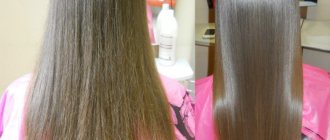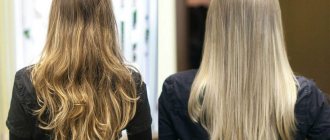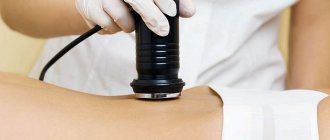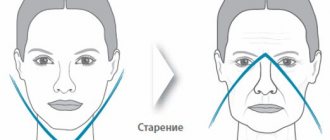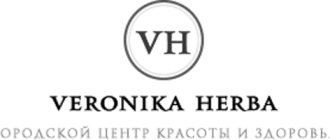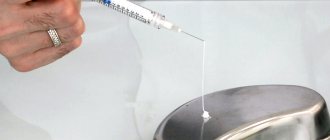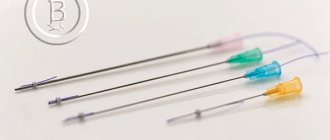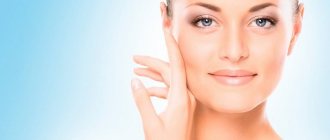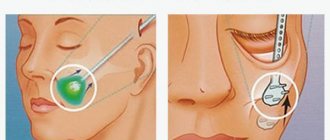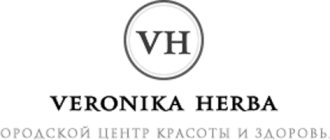We are talking with dermatocosmetologist, surgeon, candidate of medical sciences, certified trainer in injection techniques, founder of an independent training school Natalia Shkolyar and cosmetologist, scientific consultant of the 1nep.ru portal Ekaterina Glagoleva .
Advertising happily assures us: both mesothreads and fillers successfully fight wrinkles, strengthen the skin framework, and provide a lifting effect (it is the last promise that attracts consumers the most). However, according to Natalya Shkolyar, it is completely wrong to identify their actions.
- The action of fillers is aimed at increasing volume: with their help, you can restore the youthful roundness of the cheeks and cheekbones, and even out the oval of the face. And fill the defects of the dermis - wrinkles and folds.
- With the help of mesothreads lying freely in the skin, a kind of bioreinforcement occurs. A needle with an attached thread is passed through the subcutaneous layer along certain vectors, after which it is removed, but the thread remains, and when absorbed, a collagen “framework” is formed around it.
There is a real confrontation between fillers and threads. In the heat of competition, they are ascribed advantages that are far from reality. Both methods are surrounded by many myths. In such a situation, it is very difficult for the consumer to make the right choice!
MYTH 1: The introduction of mesothreads and fillers rejuvenates the skin.
According to Natalya Shkolyar , this is one of the most dangerous misconceptions that most aesthetic medicine specialists are trying to introduce into our consciousness. Alas, no biological rejuvenation of the skin occurs. From the point of view of medicine in general and surgery in particular, the desired lifting effect is based on trauma to the soft tissues of the face, without visible marks on the skin. And recovery follows the principle of wound healing. When threads and fillers are introduced, the skin is damaged, soft elastic “micro-scars” appear inside, which contribute to a change in its optical density. As a result, the patient sees in the mirror that he begins to look younger.
In fact, the biological process of skin aging does not slow down, and sometimes accelerates (if an inexperienced specialist violates the administration technique or the patient does not follow the doctor’s recommendations).
Nowadays, all forced “rejuvenating” manipulations are increasingly presented as improving a person’s health. This does not add respect to people who mislead patients.
Ekaterina Glagoleva:
“As such, true skin rejuvenation does not occur when implanting threads made of smooth suture material. As soon as the technique appeared, many manufacturers assured that a thread of smooth suture material was placed in the middle layers of the skin and, due to the constant irritating effect, collagen synthesis processes were started. At the moment, the term “subdermal introduction of mesothreads” is increasingly heard, namely they are located in the hypodermis (subcutaneous fatty tissue), and we are no longer talking about synthetic processes of the dermal matrix.
Fillers based on hyaluronic acid have recently followed the path of evolution and combine stabilized acid to recreate volumes and unstabilized hyaluronic acid, which acts as a biorevitalizant. In this case, I rather began to talk about skin rejuvenation.”
Lifting or plastic surgery - which is more economically profitable?
The cost of any procedure (for example, we mean a facelift with threads in Moscow) is determined by the complexity of the intervention, the price of consumables, the amount of work, the experience and qualifications of specialists.
How much does a thread lift cost today?
The price of a facelift with threads is based on the initial consultation with a doctor; carrying out the necessary examinations, taking tests; categories of clinic and doctor’s qualifications; the type and quantity of facial threads used (the cost of threads for implantation into facial tissue varies widely); volume of work - the area of the skin area that is being corrected. Specialists most often work with aptos threads (the most popular variety). The cost of a range of services is from 30 thousand rubles.
Cost of facial plastic surgery
The price of plastic surgery includes: initial consultation with a doctor; taking the necessary tests and conducting examinations; category of the clinic and degree of qualification of the surgeon; cost of consumables; volume of surgical intervention; volume of manipulation - the area of skin that is subject to correction; anesthesiologist's work and anesthesia costs; work of auxiliary medical personnel; the complexity of the intervention performed, taking into account all possible risks. The plastic method of age-related correction of changes is more complex, complex, and therefore the cost of facial plastic surgery is higher - from 150 thousand rubles.
MYTH 2: Compared to fillers, mesothreads provide a greater skin tightening effect.
Natalya Shkolyar's opinion:
“To some extent this is true. When fillers are injected, the skin is smoothed by filling the volume lost with age, which at the same time contributes to its “tension”. With biorevitalization (point injection of gel), the skin also slightly lifts. Smooth absorbable mesothreads reinforce the fabric. Introduced into the skin, they create a kind of mesh in it, around which, when absorbed, collagen and elastin fibers, which have become chaotic and stretched with age, “twist”. They reduce their length, and the patient feels the skin tightens and becomes more elastic. However, this lifting effect is not very great by and large. The skin only “sits” slightly. Mesothreads have no effect on subcutaneous structures—fatty tissue and muscles that have shifted downward (the main cause of age-related ptosis). For these purposes, non-absorbable and absorbable deep insertion sutures (smooth or notched) are used, which are attached to bone structures.”
Ekaterina Glagoleva:
“The skin tightening effect is provided by threads that can be classified as lifting and reinforcing - these are notched threads that are fixed in the tissue and provide true lifting.
Smooth threads provide an indirect lifting effect by creating a frame in the subcutaneous fat and tightening the tissue at the injection sites.”
conclusions
You can compare contour plastic surgery with thread lifting, but you shouldn’t oppose each other. At the initial stages of age-related changes, one technique is often sufficient; for pronounced wrinkles, folds, and ptosis, it is recommended to combine them. Sign up for a consultation at GMTClinic - and a competent cosmetologist will conduct an examination, assess the condition of your skin, and select the best ways to solve existing problems to achieve the best result.
If you need contour plastic surgery or thread lifting, then go to GMTClinic.
MYTH 4: In terms of specific gravity, mesothreads are lighter than fillers. Therefore, they do not aggravate age-related ptosis.
There is some truth to this. Mesothreads are very thin, one tenth of a millimeter in diameter. Thanks to this, they do not stretch, but instead reinforce the fabric. With the constant introduction of fillers into one area (for example, the nasolabial fold), the volume of the injected substance increases each time.
However, to a greater extent, according to Natalya Shkolyar , this is not due to the “sagging” of soft tissues under the weight of the gel, but to the fact that the injected volume is very difficult to control. If the filler is administered by a not very experienced specialist, overcorrection occurs, followed by a not very good aesthetic effect. It can be compared to using cling film. When you stop pulling it, it “shrinks up”. The same thing - alas! - happens to the skin: the so-called optical density of the tissue does not change for the better.
Ekaterina Glagoleva:
“Yes, we always take gravity into account and must remember that when we add weight to already heavy, sometimes swollen tissues, we aggravate the manifestations of gravitational ptosis. And the property of hyaluronic acid to retain moisture also plays a role in making tissue heavier. But injecting a large number of PDO-based threads (smooth threads) can also weigh down the tissue. Everything again comes down to a rational choice of methodology and quantity.”
Opinion of cosmetologists
According to cosmetologists, each method has its own advantages and disadvantages. The decision to choose one or another procedure is the competence of professionals.
The criteria they follow are: the type of age-related changes, the presence of indications and contraindications, skin type, localization of the correction zone.
The algorithm of actions is built depending on the specific situation. Only in this case can the maximum effect be achieved.
Advantages of the methods
Are common:
- correction of age-related skin changes with mesothreads and fillers is atraumatic for the patient (compared to operations);
- During the procedure, no incisions are made on the skin, the pinpoint points where the needles enter heal quickly, leaving no marks;
- there is no (or short) rehabilitation period;
- minimum (compared to operations) time for a procedure, 1 procedure = 45 minutes;
- mesothreads and fillers are ≈90% biocompatible with tissues.
Fillers:
- allow you to create the missing volume;
- fill (even out) even very deep wrinkles and folds;
- promote skin hydration (biorevitalization technology with fillers based on hyaluronic acid).
Mesothreads:
- the tissue reaction to the threads is insignificant, microcirculation disruption is minimized (fillers with overcorrection can cause necrosis - a severe disruption of microcirculation);
- longer lasting aesthetic result.
Contraindications for thread lifting and plastic surgery
Both interventions (facial surgery and skin thread lifting) have common contraindications:
- period of acute infectious or somatic diseases;
- disorders in the blood coagulation system;
- decompensated diabetes mellitus;
- diseases of the heart and blood vessels;
- neoplasms;
- mental disorders;
- some skin diseases;
- period of pregnancy or breastfeeding;
- allergic reactions to anesthesia or materials used during the procedure.
Additional contraindications for face lifting include excess skin tissue, age after 60 years, and excess weight. An additional contraindication for plastic surgery is the tendency of the skin to form keloid scars.
Indications
Almost the same for fillers and mesothreads:
- nasolabial folds, labiomental wrinkles;
- vertical and horizontal wrinkles;
- nasolacrimal groove;
- “purse-string” wrinkles around the lips;
- folds in front and behind the auricle;
- gravitational ptosis of the cheeks;
- eyebrow ptosis;
- folds of skin on the chin, neck, chest;
- sagging tissue on the buttocks, abdomen, arms, legs. (Due to the fairly high price, fillers are usually used in the face and décolleté areas; using threads on the body is cheaper).
- uneven relief of the skin and subcutaneous tissues after liposuction. (Both threads and fillers can be used, but the result from threads is brighter).
Cosmetology: face lift with threads. How the procedure works.
During a consultation at the clinic, the doctor gets to know the patient and finds out his wishes for the upcoming rejuvenation procedure. The condition of problem areas, as well as the general state of health, is carefully determined. After this, the doctor recommends the type of threads, as well as their required number.
The lifting procedure itself requires no more than an hour per zone. The face is cleansed of cosmetics and impurities. Local anesthesia is administered. After which the doctor makes markings in the designated areas and directly inserts the threads, placing them in the required directions. The puncture sites are inspected, processed and covered with a sterile bandage.
Rehabilitation activities
immediately after the procedure and for 2-3 days after it, you must use cold compresses (for example, Aptos Icepack);
- the patient is advised to refrain from applying makeup for 48 hours;
- you need to sleep on your back for at least 2 weeks;
- three days after the procedure, you can remove the stickers and start washing your face, avoiding pressure on the facial tissue and facial massage;
- it is required to limit the activity of facial expressions and sudden head movements for 2 weeks;
- refuse facial massage for 2 months;
- refuse thermal procedures (bath, bath, sauna) and avoid direct sunlight for 1 month;
- stop playing sports for 2 weeks;
- Follow-up examinations of the patient must be carried out 1, 2, 4 weeks, 3, 6 and 12 months after the procedure;
- Control photography is performed at 3, 6 and 12 months.
Recommended drugs
- post-procedure cream – Recowell gel to eliminate swelling and reduce the risk of bruising (in accordance with the manufacturer’s recommendations);
- treating punctures with antiseptics (chlorhexidine, miramistin) 2 times a day – 3 days;
- if necessary, NSAIDs can be prescribed (the treatment regimen is selected individually);
- if necessary, preventive antibacterial therapy is prescribed: broad-spectrum drugs (the treatment regimen is selected individually);
- in the event of an increase in temperature, the appearance of severe pain, local redness and significant swelling of tissues, the patient should immediately consult a doctor.
Side effects
Complications after a properly performed rejuvenation procedure are quite rare and can be easily eliminated. Minor swelling, bruising, unevenness, and slight retractions of the skin may appear, which usually disappear within a few weeks. However, in case of any alarming situation, you should immediately contact the clinic doctor.
Advantages and disadvantages of the method
So, let’s once again briefly summarize the main advantages of using threads in cosmetology.
This is an effectiveness comparable to plastic surgery with much less trauma.
This is a visible and long-lasting, up to five years, rejuvenation effect, getting rid of age-related wrinkles, folds and creases.
This is a short outpatient procedure and quick rehabilitation.
And it's a good price.
The main spectrum of action of biorevitalization
The biorevitalization procedure involves the introduction of hyaluronic acid under the skin, but with a softer texture than with reinforcement. The main objective of the procedure is to activate the body's own reserves to prevent aging.
Biorevitalization is aimed at:
- production of your own collagen;
- moisturizing the skin;
- smoothing out small wrinkles;
- light facelift;
- formation of an even color of the dermis.
Preparations are selected based on material of animal or human origin. The ampoule or ready-made syringe with gel is unpacked in the presence of the patient during the session. On a cleansed face, punctures are made in the desired areas of the skin at a certain depth, and the cosmetologist releases a small dose of hyaluronic acid.
After antiseptic treatment of the face, the patient immediately goes home. In the first days, swelling and hematomas are possible, which go away on their own. If you follow simple recommendations from a specialist, your skin will soon acquire a beautiful, well-groomed appearance.
The effect of the injection of hyaluronic acid does not occur immediately. As you know, the dermis needs time to produce its own collagen and elastane. Depending on the condition of the skin, 3–7 procedures are performed at intervals of several weeks. The result is cumulative.
After the bi-reinforcement and biorevitalization procedure, in order to avoid side effects, you need to reduce the load on the skin. Therefore, at first massage, going to the sauna and bathhouse, sun tanning, and stressful situations are prohibited. On the first day after injections, try not to touch the dermis with your hands and do not apply decorative cosmetics. You need to wash your face with boiled water.
Important! Be sure to use medications, creams and ointments prescribed by a cosmetologist.
Very often, women confuse the procedures of bioreinforcement and biorevitalization, because both of them are invasive methods of rejuvenation. To avoid such judgments, we decided to differentiate the concepts and find out what the difference between the methods is.
Main differences
The distinctive features of bioreinforcement and biorevitalization are as follows:
- during biorevitalization, hyaluronic acid is injected under the skin; reinforcement with liquid threads involves the use of a gel with a more pronounced texture;
- biorevitalization is aimed at restoration and slight tightening, but threads are used to model the contour of the face;
- different methods of drug administration and their dosage;
- the use of threads can smooth out large wrinkles, and injections of hyaluronic acid of a lower viscosity can only overcome small and medium wrinkles;
- duration of effect: with biorevitalization it is not so long-lasting.
A loose texture gel used for biorevitalization is used to restore the dermis after unfavorable conditions: climate change, frequent exposure to the sun, stressful situations and lack of sleep, chemical peeling and laser exposure. The standard age is 30–40 years.
The purpose of reinforcement is to create a frame from denser fabrics, which has a modeling effect. The procedure is better rejuvenating, since even large wrinkles are smoothed out. Recommended age: 40–50 years.
